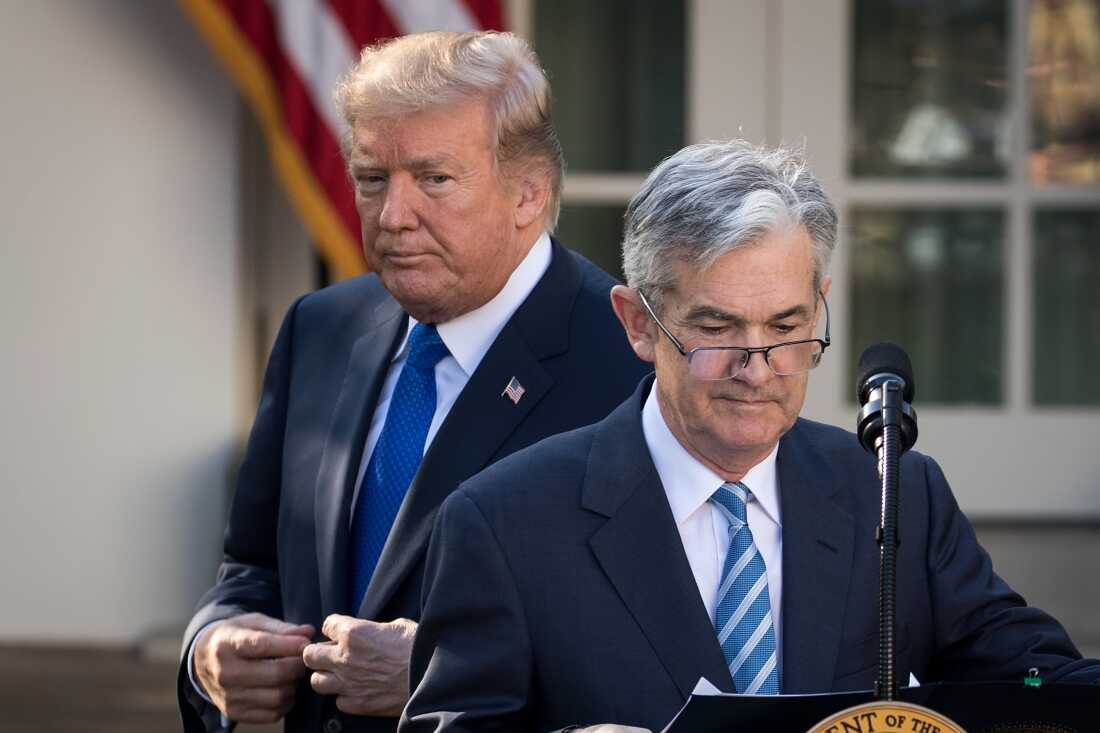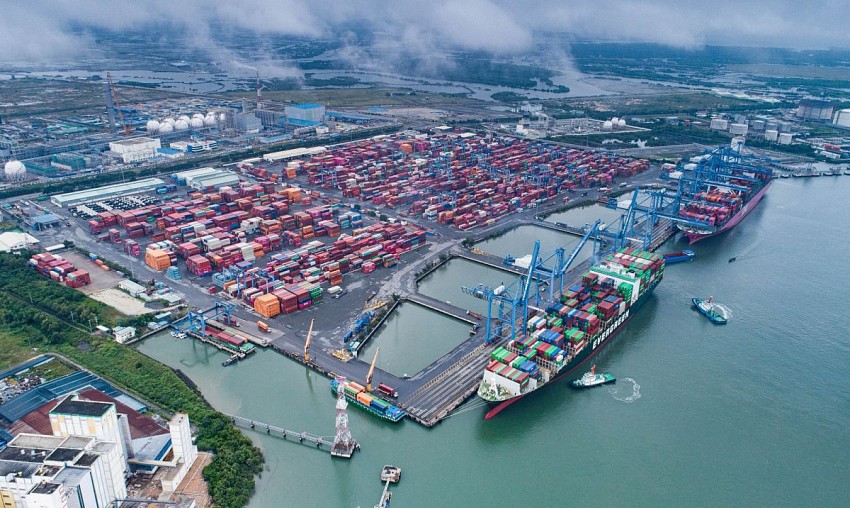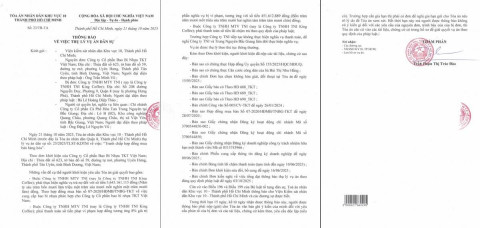Is the gold price stabilization policy truly effective?
- 15
- Business
- 11:02 23/08/2024
DNHN - Dr. Bùi Duy Tùng, an Economics lecturer at RMIT University, assesses the pros and cons of the gold price stabilization policies implemented by the State Bank of Vietnam (SBV) in recent times.

According to Dr. Tùng, these policies have contributed to narrowing the gap between domestic and global gold prices. Currently, the domestic gold price is only about 5 million VND per tael higher than the global price, compared to the significant difference of 16-17 million VND per tael in the early months of the year.
Moreover, the situation of "goldization" has been controlled. The policy of selling gold through commercial banks has helped reduce people's demand for hoarding gold, thereby decreasing the phenomenon of goldization in the market. This has contributed to short-term stability in the gold market.
The current gold selling mechanism has helped ease the "gold fever" in the country, as people no longer rush to buy gold as before. This helps stabilize the market and prevent goldization. By keeping the SJC gold bar price stable, the SBV has helped maintain consumer and investor confidence, avoiding a rush to buy gold that could lead to uncontrollable gold fevers. This has reduced pressure on the gold market and avoided negative economic consequences.
However, the gold price stabilization policies still have some drawbacks.
First, the gold trading network has been narrowed. The SBV's decision to sell gold through only four commercial banks and SJC has reduced the gold trading network, making it difficult for people to access gold, especially in provinces outside of Hanoi and Ho Chi Minh City. This reduces market vibrancy and hinders people with a demand for gold.
Second, the process of buying and selling gold has become more complicated. The current process, which requires online registration, a waiting period of a few days to receive gold, and a limited number of sales points, has reduced flexibility and created difficulties for people. This has discouraged many from participating in gold transactions. Since only commercial banks and SJC are allowed to sell but not buy gold, many people feel unsafe investing in gold. The lack of options to resell gold has made people less interested in gold as an investment channel.

Third, the market lacks supply-demand balance. Although the SBV has taken measures to stabilize gold prices, overly strict control may lead to long-term imbalances, such as the emergence of black markets and unauthorized gold trading. The SJC gold bar market has become less dynamic, with sluggishness and a lack of liquidity.
The sharp decline in gold trading has made the market less attractive to investors. Prolonged administrative management measures can lead to negative issues such as the formation of black markets, the appearance of fake gold, and fraud in gold transactions. This can erode public confidence in the official gold market.
Fourth, the policies have not yet eliminated the monopoly of the SJC gold brand. The current policy still maintains the monopoly of the SJC gold bar brand, which may lead to unreasonable price disparities and fail to ensure fair competition in the market. The SBV's continued monopoly on gold imports also limits supply, leading to shortages and unnecessary price increases.
Fifth, the price of gold rings has risen above that of gold bars. As SJC gold bars have become harder to buy due to limited sales, consumers have turned to gold rings. The rise in gold ring prices above SJC gold bars due to the shift in consumer demand highlights the imbalance in market management.
The gold bar price stabilization policy has created a "whack-a-mole" effect, causing gold ring prices to rise sharply and potentially continue rising, leading to market instability. The SBV's strong intervention in managing SJC gold bar prices can distort the gold market. When gold bar prices are kept low compared to gold ring prices, this may encourage speculative behavior or unwanted capital flows, causing long-term instability in the market.
Ngoc Hoang (RMIT)
Related news
#develop policies

What’s Vietnam’s game plan as President Trump pressures the Fed?
In a move that rattled political circles and financial markets worldwide, U.S. President Donald Trump declared he would sue Federal Reserve Chairman Jerome Powell for “stifling growth” with high interest rates.

Why is there a need for a development proposal in the field of cultural industries?
In the context of globalization and the booming creative economy, cultural industries are increasingly important in national development strategies. Vietnam needs a development proposal in this field to tap into its potential.

Digital transformation in Bình Thuận: An inevitable trend for economic development
Digital transformation is an inevitable trend, and Bình Thuận needs to accelerate the application of technology across various economic sectors.

FDI continues to flow strongly into real estate
Among investment sectors, real estate continues to attract significant FDI. This raises the question of why FDI continues to pour into this sector.

Vietnam will become a maritime power in 2045 for this reason
For Vietnam to become a strong maritime nation, wealthy from the sea as the Party and State have set out, many bold and synchronous solutions are being proposed.

Practical applications of carbon credits in the economy. Part XI: Bridging policy and strategy for the carbon credit market
To develop the carbon credit market, the Government and businesses must improve cooperation and communication. The Government needs to provide clear policies, while businesses must adopt emission reduction strategies and leverage carbon credits.
Đọc thêm Business
From New Year messages of World Leaders to the “new rules” of the Global economy in 2026
At a pivotal moment of transition, New Year messages from capitals such as Hanoi, Beijing, Washington and Paris reflect distinct priorities and strategic visions.
Connecting Leaders, Shaping the Future: Strategic Leadership Planning Meeting – CorporateConnections Hanoi A
"Your network is your most powerful flowing asset. It generates value, multiplies opportunities, and accelerates your influence across borders."
Innovative ESG enterprise: Trạm Xe Việt startup proposes solutions to build a green mobility ecosystem
As Vietnam commits to achieving Net Zero by 2050 and tightens emissions standards, the transportation sector faces unprecedented pressure to transform.
Deputy Prime Minister Nguyễn Chí Dũng: “The country’s major challenges weigh heavily on my mind — and we must resolve them together.
On the morning of November 26, 2025, Deputy Prime Minister Nguyễn Chí Dũng chaired a high-level working session at the National Innovation Center (NIC) in Hòa Lạc.
Unitsky String Technologies signs cooperation agreements with three Vietnamese partners, opening a new direction for smart mobility and sustainable development
The signing ceremony took place in Minsk, Belarus, on November 28, 2025.
Before the D‑day to abolish flat‑rate tax: Fear of technology and costs leave small traders struggling to adapt
From 1 January 2026 the flat‑rate tax regime will be abolished. Small business households will be required to declare tax based on actual revenue. MISA supports the transition with technology to help micro‑merchants adapt smoothly and transparently.
Vietnamese enterprises at a crossroads: the impact of a potential US–China deal
As the world closely monitors every shift in US-China relations, emerging signals of a strategic agreement between the two global powers are raising hopes for global economic stability.
HDBank: Impressive profit growth, leading in profitability and advancing international integration
Ho Chi Minh City Development Joint Stock Commercial Bank (HDBank, stock code HDB) announced its consolidated profit before tax for the first 9 months of 2025 reached VND 14,803 billion, marking a 17% increase year-on-year (YoY).
TNI King Coffee sued for over VND 5 Billion in unpaid debts
On October 21, 2025, the People’s Court of District 10 in Ho Chi Minh City officially accepted a civil lawsuit concerning a commercial contract dispute between TKT Vietnam Plastic Packaging Joint Stock Company and TNI King Coffee Co., Ltd.
VINASME and Jeonnam Technopark Sign MOU on technology cooperation, human resource training, and trade promotion
On October 15, 2025, in Hanoi, VINASME and Jeonnam Technopark (Korea) signed an MOU to promote trade, advance technology transfer, and develop human resources between enterprises of both nations.











